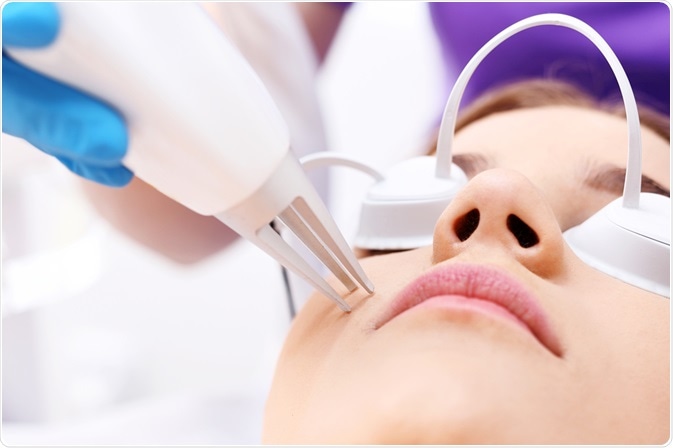Acne is a common skin complaint that affects most people at some point in their lives. The condition causes spotty, oily skin that may be painful and hot. Professional treatments are available, such as chemical peels and dermabrasion.

Robert Przybysz | Shutterstock
Almost everyone who develops acne finds the condition affects their face. In more than half of affected individuals, it develops on the back and in around 15% it occurs on the chest.
What constitutes acne?
Acne is usually caused by hormone changes that occur during puberty, although these changes can affect people of any age.
Some hormones cause grease-secreting glands near hair follicles to produce excessive amounts of sebum. This changes the activity of an otherwise harmless bacteria in the skin called P. acnes, which leads to the occurrence of inflammation and pus. The inner lining of the follicle also gets thicker and blocks pores.
The six main types of spots that occur in acne are liste:
- Blackheads – Small, yellow bumps that appear dark because the follicle lining produces pigmentation
- Whiteheads – Small, white, firm bumps that do not empty when squeezed
- Papules – Tender, sore, red bumps
- Pustules – Tender, sore bumps with a white tip caused by the accumulation of pus
- Nodules – Large, firm, and sometimes painful bumps that build up underneath the skin surface
- Cysts – Large bumps that resemble boils and are filled with pus
Cosmetic surgery
Patients may be prescribed medications or creams for their acne, but sometimes skin pores filled with excess oil, bacteria, and dead skin can cause the skin to scar. Plastic surgeons use various methods to treat damaged and scarred skin. The main procedures used are described in more detail below.
Chemical peel
A chemical peel is an effective treatment for shallow and superficial scars caused by acne. A solution of strong chemicals is used to remove the outer layer of skin.
The chemicals used depends on the depth of the peel, which may be light, medium, or deep. The solution is applied to the skin with a cotton-tipped applicator, starting with the forehead and then moving across the cheeks and chin. The new skin that then grows and replaces this old layer is usually smoother and less scarred.
Following the procedure, patients need to wear bandages for several days. Once the bandages are removed, patients can expect to find their skin red, swollen, and scaly for up to seven days.
Blisters may also form that crust over and peel off over the course of several weeks. After a light peel, the skin does not take any time to heal, while it can take up to two weeks to heal after a medium or deep peel.
Laser skin resurfacing
This technique is also used to treat superficial scars. A wand-like laser is used to apply high-energy light to vaporize the outer layer of skin, which is then replaced by smoother, more youthful, new skin. The process is also sometimes called “laser peeling.”
This peeling also heats the lower skin layers, which enhances collagen production and stimulates smoother healing of the skin. Patients can expect the area that has been resurfaced to be swollen for up to 48 hours, to itch and sting for up to 72 hours and for skin to peel off for up to seven days. The skin generally heals completely within 10 to 21 days.
Dermabrasion
Dermabrasion refers to surgical sanding or planing of the upper layers of the scar in order to remove it so that new skin can grow in its place. This is a highly effective technique, often associated with dramatic and long-lasting effects. Patients can expect smooth, refreshed skin to be visible within five to eight days and skin to be normal in tone within eight weeks. Pain and swelling are usually minimal.
Microdermabrasion
Here, tiny, rough particles are passed through a vacuum tube and applied to the upper layer of scarred skin, to scrape it away and allow new skin to grow. The procedure is painless and multiple treatments can be applied to ensure the best outcomes.
Further Reading